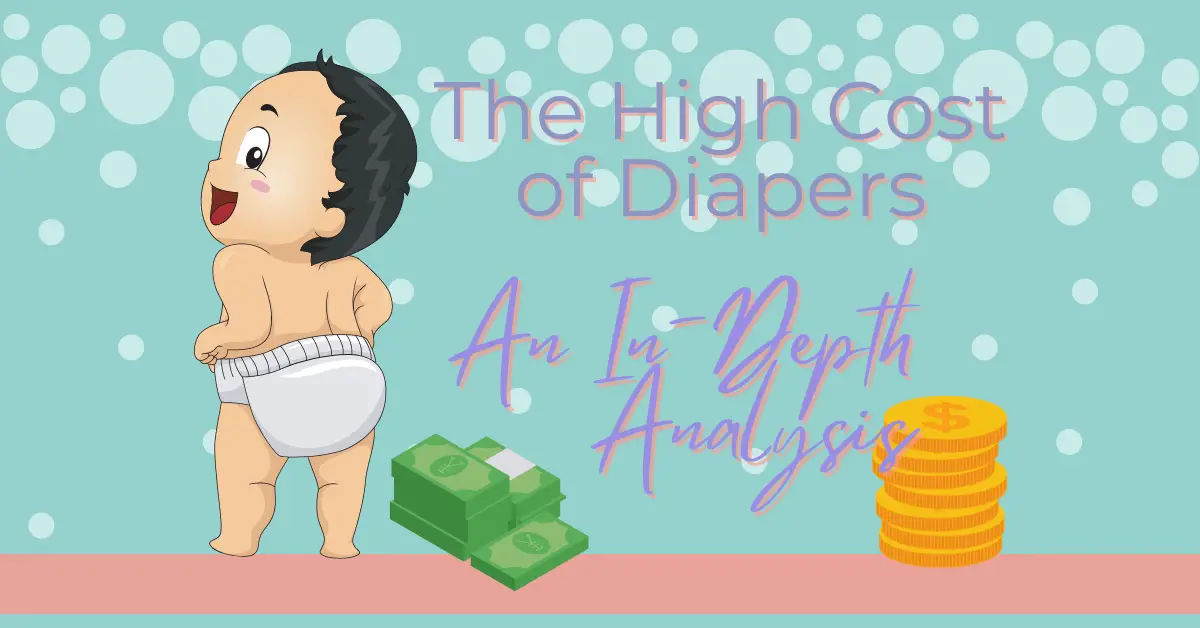Becoming a parent brings immense joy and a new set of responsibilities. One of those responsibilities is providing the essentials for the child, such as food, clothing, and diapers. As any parent can attest, the cost of diapers can be a significant burden on the family budget. But why are diapers so expensive? This post dives into the various factors that contribute to the high cost of diapers, exploring aspects like raw materials, production, distribution, and branding.
Raw Materials and Production Costs
The primary materials used in diaper manufacturing are pulp, superabsorbent polymer (SAP), and nonwoven fabric. These materials are crucial in ensuring the diaper’s functionality, comfort, and absorption capacity. However, the cost of these raw materials is directly affected by fluctuations in the global market. For instance, if there is an increase in the price of crude oil, it directly impacts the cost of producing nonwoven fabric and SAP, subsequently leading to higher diaper prices.
Additionally, the production process of diapers involves multiple stages, including cutting, folding, and sealing, as well as the integration of elastics, fasteners, and other components. This complex manufacturing process requires specialized machinery and skilled labour, contributing to increased production costs.
Distribution and Logistics
Diapers are bulky and take up significant space in warehouses and shipping trucks. As a result, the logistics of getting diapers from the manufacturing facility to the store shelves can be costly. Retailers also need to factor in expenses like warehouse storage, transportation, and labour for stocking shelves, all of which contribute to the overall cost of diapers.
Moreover, fuel prices can have a direct impact on the transportation costs associated with shipping diapers. As fuel prices rise, so do the costs of moving products across the country or around the world. This increase in transportation costs can then be passed on to consumers, driving up the price of diapers.

Branding and Marketing
Branding and marketing play a significant role in the diaper industry, with well-known brands spending millions of dollars on advertising campaigns to maintain their market share. These costs, in turn, are passed on to consumers through higher prices for the product.
In addition, the diaper market has witnessed an increasing focus on creating specialized products, such as organic diapers, diapers for sensitive skin, and diapers with unique designs. These niche products often command a premium price due to their targeted nature and the additional research and development costs associated with their production.
Retailer Markups
Retailers, such as supermarkets and big-box stores, often mark up the prices of diapers to maintain their profit margins. This markup allows them to cover overhead costs, such as rent and utilities, as well as the cost of employing sales associates.
Moreover, many retailers also offer loyalty programs, discounts, and promotions to entice customers to purchase diapers from their stores. While these programs can save customers money in the short term, the cost of funding these initiatives is ultimately passed on to consumers through higher prices.
Free baby stuff for you to claim for your baby! Sign up to get the PDF with all the links.
Environmental Regulations
As awareness of the environmental impact of disposable diapers has grown, so too have regulations on their production and disposal. Many countries have implemented stricter standards for the manufacturing process, requiring the use of more sustainable and eco-friendly materials.
While these regulations are essential for protecting the environment, they can also lead to increased production costs, which are then passed on to the consumer. In addition, some manufacturers have introduced biodegradable or compostable diapers, which typically come at a higher price point due to the specialized materials and processes involved in their production.
Economies of Scale
The diaper industry is dominated by a few large players, such as Procter & Gamble (Pampers) and Kimberly-Clark (Huggies). These companies benefit from economies of scale, which allow them to produce diapers at a lower cost per unit due to their large-scale operations. However, smaller manufacturers, often producing niche or speciality diapers, do not have the same advantage. As a result, they may need to charge higher prices for their products to cover their production and operating costs.
Price Inelasticity
One contributing factor to the high cost of diapers is their price inelasticity. Diapers are considered an essential item for families with young children, and the demand for diapers remains relatively constant, regardless of price fluctuations. This inelastic demand means that manufacturers and retailers can raise prices without significantly impacting the quantity demanded by consumers, further contributing to the high cost of diapers.
Research and Development
Diaper manufacturers invest heavily in research and development to create innovative products with improved absorption, fit, and comfort. These advancements, while beneficial for consumers, also contribute to the high cost of diapers. The cost of research, development, and testing is ultimately passed on to consumers in the form of higher prices for the end product.
Taxes and Tariffs
Depending on the region or country, diapers may be subject to taxes and tariffs that can impact their final cost. Import and export taxes, value-added taxes (VAT), and other levies imposed by governments can increase the overall price of diapers. These additional costs are generally passed on to consumers, driving up the price of diapers in affected regions.
Currency Fluctuations
Lastly, global currency fluctuations can have an impact on the cost of diapers. For instance, if the currency of a country where raw materials are sourced weakens against the currency of the country where the diapers are produced, the cost of importing those raw materials will increase. This can lead to higher production costs, which are then passed on to consumers in the form of increased diaper prices.
Conclusion
The high cost of diapers can be attributed to a combination of factors, including raw material and production costs, distribution and logistics, marketing and branding, retailer markups, environmental regulations, economies of scale, price inelasticity, research and development, taxes and tariffs, and currency fluctuations. Understanding these factors can help consumers make more informed decisions when purchasing diapers and advocate for policies that may help to alleviate the financial burden on families.

